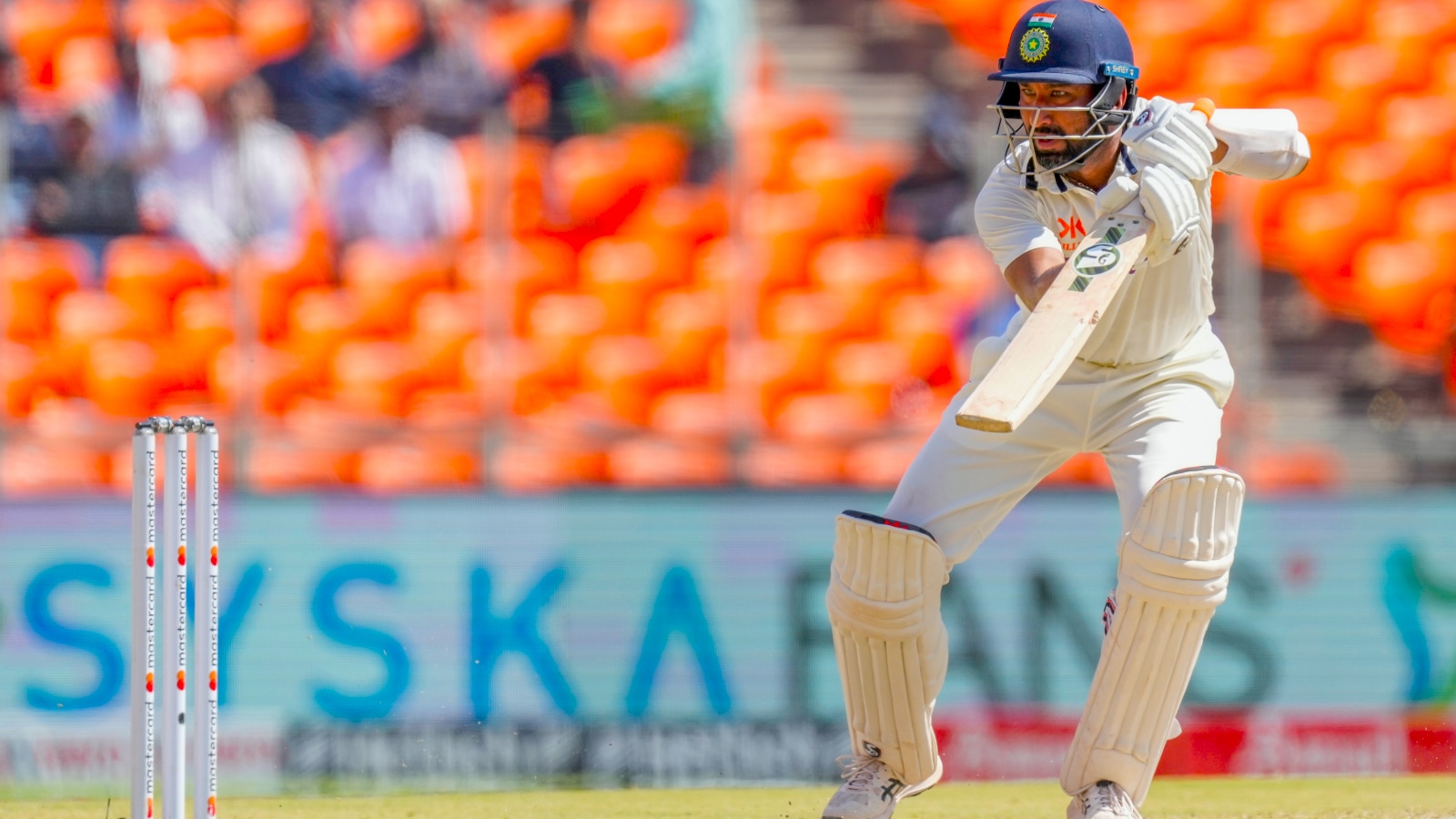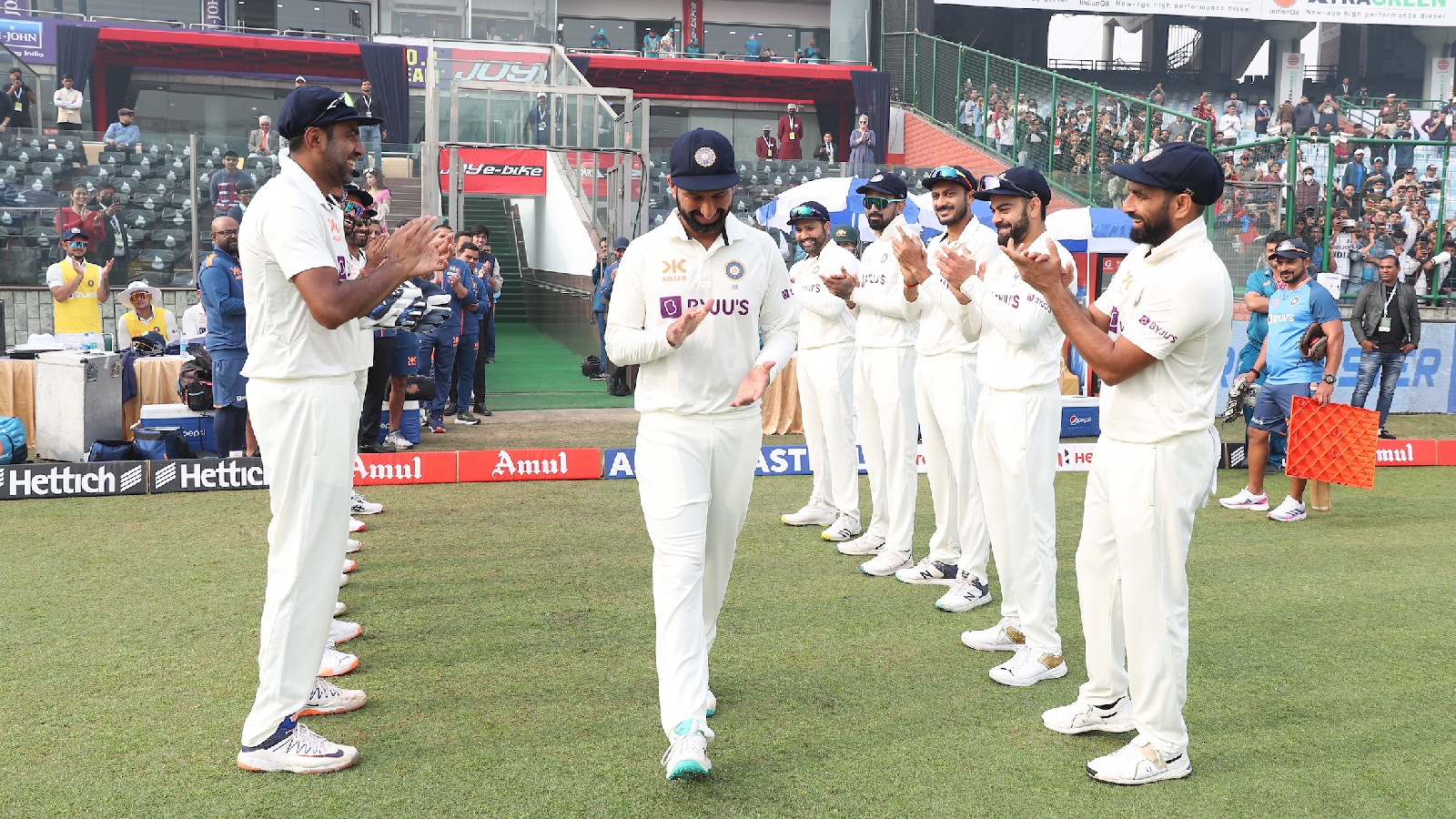After 13 years of Test cricket, 7195 runs, 19 hundreds, soaking 16,217 balls, stitching numerous heroic efforts, battling physical pain and mental exhaustion, Cheteshwar Pujara has folded his Test whites. He talks to The Indian Express about the art of batting time and how he mastered it.

Cheteshwar Pujara: When I played in the Under-14 age group for Saurashtra, we had a weak batting line-up. A lot depended on me, and so it was not enough for me to score just a hundred. I had to stay on and score a double hundred, perhaps triple, otherwise the team might get pulled out. So from responsibility came patience. The same applied in different age groups because until I was in the Ranji Trophy, we were not the strongest in the circuit. Even the Ranji team, even though we had good players, we were building a team. So that allowed me to become mature very quickly. I realised there is more responsibility on my shoulders. I learned to play with a lot of patience and commitment and put a heavy price on my wicket. It became a habit, and I carried it to international cricket.
Story continues below this ad
Q: You also prepared meticulously in the nets, whether you were in bad touch or good.
Cheteshwar Pujara: For me, it was more of a routine because you find out your success mantra there. It was about going into the nets and hitting as many balls as possible. Whether I scored runs or not didn’t matter. But later on in my career, I also realised that it’s not just about quantity but also quality which is important. So later on, I realised the importance of managing time and being smart. You don’t need to bat for 45 minutes if you can achieve the same thing in 15 minutes. But that only comes with the experience. So earlier days, it was always about quantity, but as I played more cricket, I realised that the balance of quality and quantity is important.
Q: How did you understand that you have hit your zone?
Cheteshwar Pujara: There was nothing specific as such. It is always about being focused and starting carefully, getting through the first half an hour, whether I had been scoring runs or not. It is the time you are bound to make mistakes because you have been sitting in the dressing room and your body has not warmed up. You need some time to get acclimatised to the pitch and the conditions, so it was important for me to concentrate my best for the first 20 minutes to feel that I am in some kind of zone. If I batted one session, I was fairly confident I would have to commit a mistake for the bowler to get me out.
Story continues below this ad
Q: Even when you were at the non-striker’s end, you always used to watch the ball till it reached the fielder.
Cheteshwar Pujara: I did this just to keep the concentration going. You don’t face every ball, and you are at the non-striker’s end. But watching the ball, your eyes begin to open up a bit more, you become a bit more alert, your concentration intensifies, and you are telling your brain to do that little bit more. Over a period of time, it becomes a habit.
Q: Batsmen talk about switching off between deliveries? What were your routines?
Cheteshwar Pujara: I didn’t have any particular habit or routine. I used to look around the stadium. Sometimes, some of the stadiums are quite scenic and you appreciate it. Then you pick a spot in the stadium where you just look between balls. Also, I had the habit of tapping on the pitch, so I used to just walk down the pitch and tap it a few times. It helped me switch off, even though you don’t need to give any signal to the brain.
Story continues below this ad
Q: Batsmen emphasise on forgetting the last ball, whether you have played or missed. But how practical was it?
Cheteshwar Pujara: I learned it after a while. It’s never easy because you are trying to think about what you could have done better with the previous ball. But the moment you do that, then you are not focusing on the next ball. When you’re a young cricketer, it’s hard to do it. As I gained more experience at the highest level, I realised that what you have done on the last ball hardly matters because it’s the next ball that you’re going to play.
Q: When did you start tracking the ball from the bowler’s hand? Different batsmen have different methods.
Cheteshwar Pujara: The moment the bowler started his run-up, even when it was long enough, I used to just look at the ball. The prime focus always used to start when the bowler was about to jump and at the point of release, that’s when you need your concentration to be at your sharpest. When you are starting (to track the ball), you are looking at the ball but you are not intensely focussing on the ball. So when the bowler is about to jump and then at the point of release, that’s when you have your intense focus and concentration. Watching the ball for a long time can be draining. But for me, it was important to observe the ball when the bowler was running in.
Story continues below this ad
 India’s Cheteshwar Pujara plays a shot during the third day of the fourth cricket test match between India and Australia in Ahmedabad, India, Saturday, March 11, 2023. (AP Photo)
India’s Cheteshwar Pujara plays a shot during the third day of the fourth cricket test match between India and Australia in Ahmedabad, India, Saturday, March 11, 2023. (AP Photo)
Q: Was it difficult playing the ball and not the bowler?
Cheteshwar Pujara: It was not difficult for me to play the ball and not the bowler because for me, it was very important to be in my zone. It was very important to play on the merit of the ball. So I never looked at the bowler’s reputation, even though I looked for the cues, what they were trying to, whether they were coming from wide of the crease, or bowling from a certain angle and things like that. But all those things you pick up subconsciously. So you don’t have time to think of the bowler and then play the ball.
Q: Were there moments in your career when you felt you were absolutely at the zenith of your powers?
Cheteshwar Pujara: One of them came in Sri Lanka, I scored 145 opening the batting on a green track in a decider. Of course the 123 in Adelaide and then the 82 not out in Delhi (against Australia) when I batted with a broken finger.
Story continues below this ad
Q: You copped a lot of blows on your body, especially in the 2021 tour to Australia…
Cheteshwar Pujara: You do get shattered sometimes, but then you have to keep your calm. You have to trust yourself, the game, and the ability. Getting hit once or twice is fine, but when it hits repeatedly on the same spot, the pain becomes unbearable. That’s where the mental toughness comes in. That’s when your dedication and love for the country comes in. I believe in God and he gives me strength.
Q: You chant in your mind when you are batting…
Cheteshwar Pujara: I do that. It allows me to focus, to keep distractions away and channelise my energy into one specific thing, to stay in the present moment and not worry about what might happen in the future. It helps keep your concentration and forget about what is happening around. You are observing things, but you’re still calm, composed, your concentration is at its peak.
Story continues below this ad
Q: You always keep your temper too…
Cheteshwar Pujara: Sometimes you do feel emotional or you do feel bad about what is happening. Sometimes when not batting well, sometimes sledging. But you want to stay and bat for the country and then let your bat do the talking. So if you want to do that, the best thing is to stay focused on your game, stay focused on what you want to do and ultimately if the result is positive, like what happened in 2021 against Australia, or 2017 against them, you feel a lot of satisfaction. If you are focusing on what you need to do rather than getting carried away with what’s happening on the field, nothing affects you.
 Cheteshwar Pujara announced his retirement on Sunday, prompting special reactions from his teammates and former cricketers. (BCCI)
Cheteshwar Pujara announced his retirement on Sunday, prompting special reactions from his teammates and former cricketers. (BCCI)
Q: Do you think batsmen are less patient these days?
Cheteshwar Pujara: The game has moved, and things have changed a lot. If you look at the way the modern cricketers are, they first play the T20 format and once they are successful they play Test cricket. It is the case not just in India, but all over the world because that is the dominant format. It is not bad because players should play all three formats. But if they are coming in from white-ball cricket, their best game is to attack and then work on the defensive side (when they start playing Test cricket). There’s nothing wrong with that. I think the game is changing and that’s how it’s going to be. But one needs to find a way to balance their attack and defence. It’s how modern cricket is and you have to accept that.
Story continues below this ad
Q: In India’s recent series, Shubman Gill especially showed a lot of restraint and faced a lot of balls…
Cheteshwar Pujara: That’s how the game should be played. You always look at the larger picture with the stuff the team wants. In that situation, if the team wants you to defend, you need to. If the team wants you to play positively, you need to play positively. Just batting one way would not always work. You have to assess what is needed for the team and then take a call. If the natural game is to attack, you have to attack. But you have to work hard on defensive skills. I’m sure they’re making that effort to learn.









